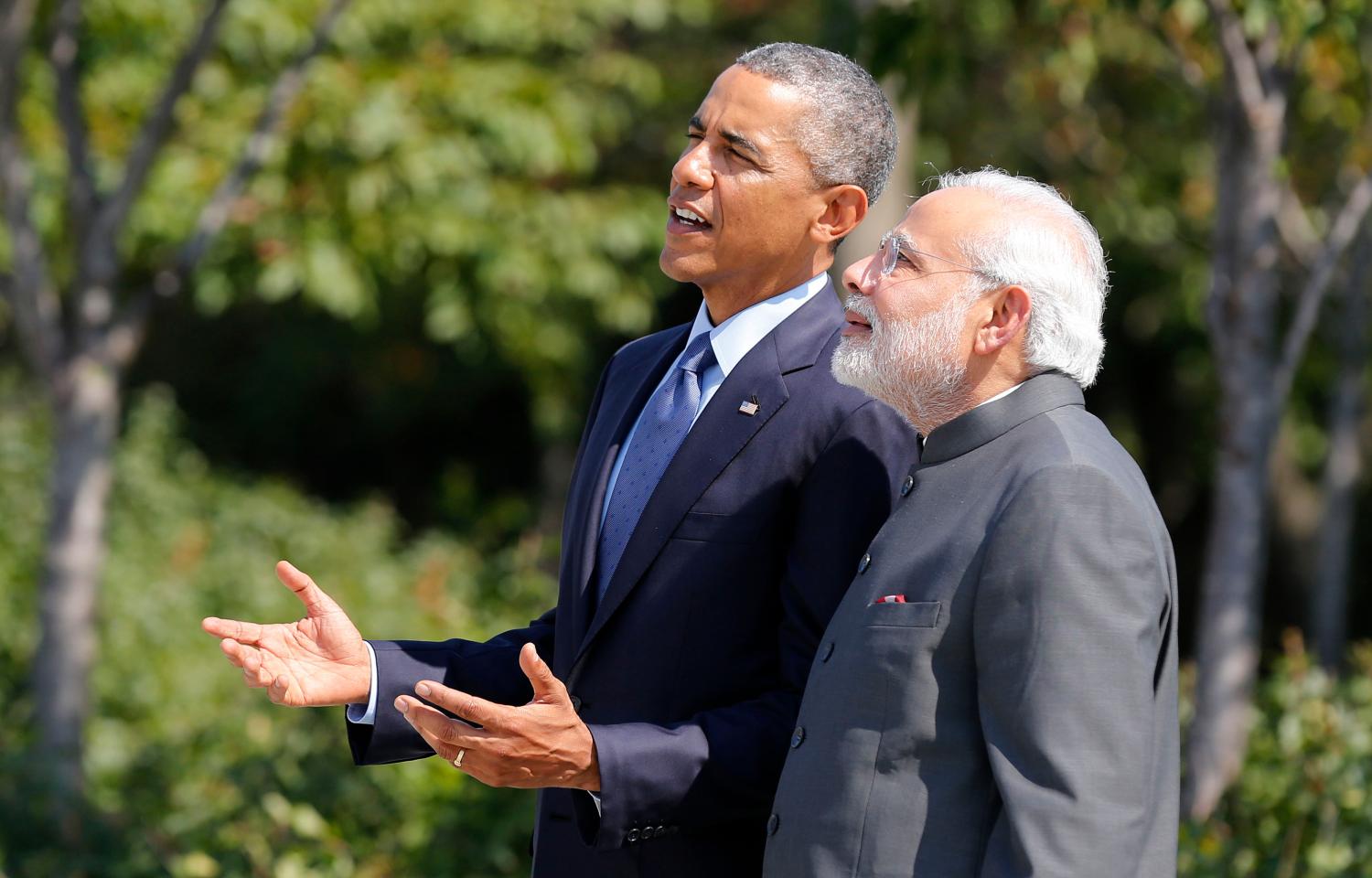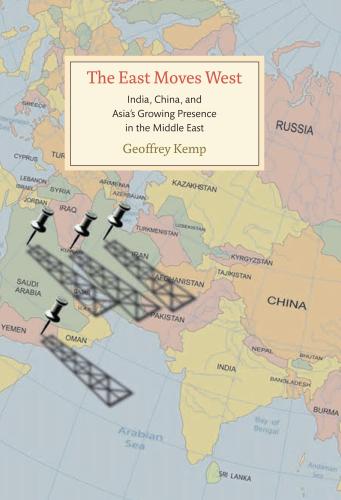Content from the Brookings Institution India Center is now archived. After seven years of an impactful partnership, as of September 11, 2020, Brookings India is now the Centre for Social and Economic Progress, an independent public policy institution based in India.
Within months of his election in May 2014, Prime Minister Narendra Modi made a bold commitment to build 100 smart cities throughout India. This centerpiece of his urban agenda aims to help rapidly developing satellite cities and major urban centers become the magnets of foreign investment and jobs and “symbols of efficiency, speed and scale.”
In their first meeting in September 2014, President Barack Obama agreed that U.S. industry will serve as lead partners with the prime minister in developing three of those cities—Ajmer (Rajasthan), Vishakhapatnam (Andhra Pradesh), and Allahabad (Uttar Pradesh).
This U.S.-India partnership on smart cities comes at a time when there is rising public and private sector interest in deploying big data, technology, and infrastructure to meet the demands of a rapidly-urbanizing globe. In India alone, the United Nations estimates there will be 400 million additional residents in cities by 2050 as rural areas lose 50 million persons. That pace of urbanization, coupled with pressures from climate change and fiscal stress, are creating demands for new, more efficient ways of operating. Thus, cities’ ambitions to become “smarter” range from the use of information and digital infrastructure to manage the energy and water use in buildings to the creation of intelligent transport networks to minimize congestion.
For Modi and India’s cities, the promise of this tech-savvy approach is greater livability, sustainability, and improved public accountability and performance. This modernization would also deliver jobs and attract new investment. For global firms providing smart city services, the benefit is entry and leadership in a rapidly growing market. By one estimate, the smart cities market is projected to hit $1.5 trillion by 2020.
Despite this convergence, the smart cities movement is still a work in progress. The deployment of technology-driven solutions to urban challenges has failed to meet private industry’s ambitions for efficient and effective uptake and public leaders’ desires for local impact. Worse yet, a smart city is often whatever each company happens to be selling because cities are underprepared to be good business partners and navigators of the public interest. Partly as a result, most of the leading best practices are found in developed cities (though innovations are beginning to be tested and applied in developing cities like Nairobi).
Thus the United States and India have an opportunity, through this new partnership, to make the three cities the model for smart city development. It is time to demonstrate that a smart city can effectively leverage private investment and expertise while meeting the goals and aspirations of local residents and leaders. The good news is there are some emerging best practices to build upon.
The following are five principles that can serve as a framework for a U.S.-India partnership on smart cities:
- A smart city should be economically-driven, not technology-driven
A technology-first approach to smart city development, without a clear map of a city’s future direction, will often lead to new technology that will fail to result in sustained, community-wide change. Just as no business can expect to succeed without a business plan, no city can expect to maximize growth and investment without an economic plan. That means the first step requires sharp self-awareness: each Indian smart city should develop or update a strategic plan for growth, one that has clear goals toward job growth and productivity, economic inclusion, and sustainability and resilience. The plan would have assessed strengths and weaknesses, and generated strategies that leverage unique industry specializations, innovation, education and skills development, land and infrastructure, and governance and public services. Edmonton, Canada is a clear leader in this area, using technology programs throughout the six strategic plans contained in its City Vision 2040 effort to design and achieve the city’s long-term economic strategy.
Such a comprehensive planning approach addresses a major flaw in the current market. The typical agenda is for private firms to approach cities with available solutions. However, both cities and firms often find this yields unsatisfying results, even though both agree the solutions could improve their cities. A November 2014 report from McKinsey on granular growth opportunities in India documented how the 29 states and their cities are experiencing different growth trajectories, with some distinctly high-performing and others less so. This reinforces that off-the-shelf technology solutions are not viable and will vary in each market. Only by first establishing a comprehensive economic vision can cities know what products and solutions to demand and what policies to adopt. Doing so will also create transparency of purpose that will lead to a growing marketplace for all parties.
This is not an inconsequential proposition for Indian cities which largely lack the civic infrastructure to construct such a modern planning framework. The Modi government, with U.S. industry, should provide resources, technical assistance, and/or private sector expertise to the smart cities, especially in more powerful states, to ensure that a vision and plan exists to guide technology investments and infrastructure.
- Each smart city should have a chief innovation officer to guide and coordinate investments
Some cities have appointed smart city executives–whether known as chief technology, innovation, information, or sustainability officers–tasked with deploying new technology across departments while bringing in private‐sector technology and expertise especially regarding physical development. These individuals typically report directly to city, state, or top regional leaders, and their directives often involve working alongside other agency’s leadership or information technology managers. Having a single point of contact and expert on behalf of government also ensures that multiple smart city projects and investments are coordinated, aligned with the city’s economic plan, and provides clarity for the private sector. Good examples exist in Barcelona, Amsterdam, and Philadelphia.
The Indian government should consider issuing a competitive challenge grant for which cities would apply for funding to hire a chief smart city officer. In 2013, the Rockefeller Foundation issued a similar challenge to cities to hire chief resilience officers.
- Smart city development should facilitate India’s own technology and innovation capabilities
While the initial aspiration might be to open up India’s cities to investors and industry giants worldwide, such an injection of global high-tech prowess should lead to the growth of India’s indigenous innovation and technology community. The establishment of state-of-the-art smart cities throughout India is a ripe opportunity to develop a cluster of India-based innovation firms and private enterprises, rooted locally or nationally. Such firms could work alongside U.S. based businesses and experts or be subcontracted by government to help design, build, operate, and maintain the smart city systems that get created. With a high number of young workers in India, the smart cities initiative could also provide more training and job opportunities for young adults, many of whom naturally gravitate toward technology-based jobs. Copenhagen is one city reaping the economic rewards of its emphasis on sustainable development through business formation, firm expansion, job growth and private investment.
In this way, smart cities should not be treated as a one-time investment to do the same things better. Instead, they should be platforms to provide new services and facilitate the emergence of new innovation, industries and jobs. Toronto, arguably the smartest city in North America, is currently renewing its industrial waterfront to create a state-of-the-art IT hub. Waterfront Toronto will connect businesses and residents with Canada’s first open-access, ultra-high-speed broadband community network. The fiber-optic network will provide users with unlimited access to Internet speeds up to 500 times faster than typical residential networks – and is expected to generate thousands of new ‘knowledge’ jobs.
- The smart city partnership should result in new state or national enabling frameworks to scale innovation and foreign investment
Modi should work to achieve economies of scale from this initial smart city investment by making sure the best approaches are sustained and scaled in one city and then easily transferred to and replicated in others. In 2014, new specifications from the International Standards Organization established a new set of city performance indicators for smart cities and a universal approach for measuring them. Alongside the national government, states in India could be responsible for ensuring these standards are consistently applied in order to measure smart city effectiveness and compare Indian cities. Adoption of these new standards will help speed the absorption of cutting‐edge investments and grow the size of the marketplace.
- India should ensure its smart city partnership is a paragon of transparency and citizen engagement
The smart city initiative also has the potential to ameliorate India’s reputation for corruption and inequality. While these are monumental challenges to overcome, smart city technologies are – at their heart – rooted in principles of transparent government and engaged citizenry. Experts at Harvard University show how advanced telecommunications technology can make cities and governments more responsive to public concerns by connecting residents, making information available in real time, and enabling citizen participation.
Indian leaders will need to define smart city efforts clearly through a “common language” and explore novel ways to galvanize public interest. Effective marketing will help educate citizens about new smart city improvements and their tangible costs and benefits. In short, greater transparency in new technologies and infrastructure overall will ensure that changes involve and benefit the community and builds support for similar upgrades in years to come.
With these principles in mind, the U.S. and India can act, not top-down but bottom-up, to deliver the true promise of smart cities – modern urban centers that create lasting economic opportunities and quality of life for the people of India.
The Brookings Institution is committed to quality, independence, and impact.
We are supported by a diverse array of funders. In line with our values and policies, each Brookings publication represents the sole views of its author(s).










